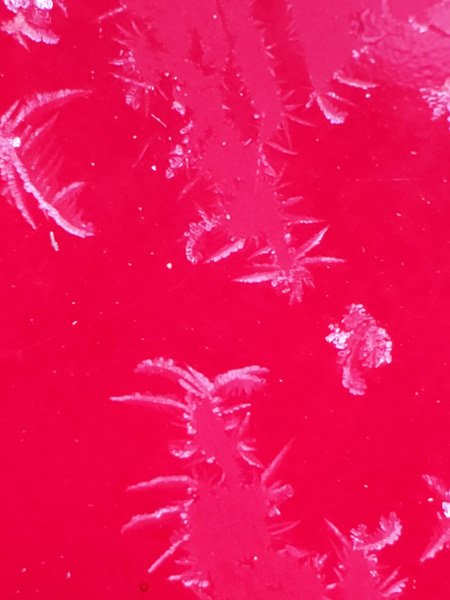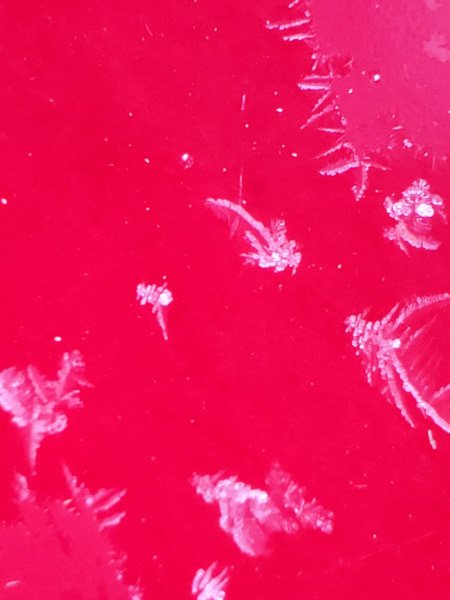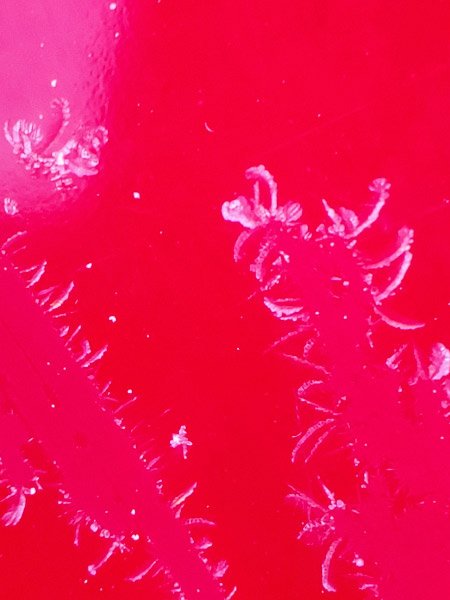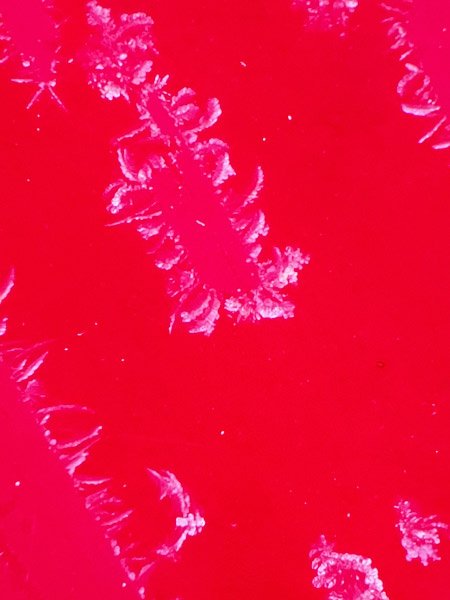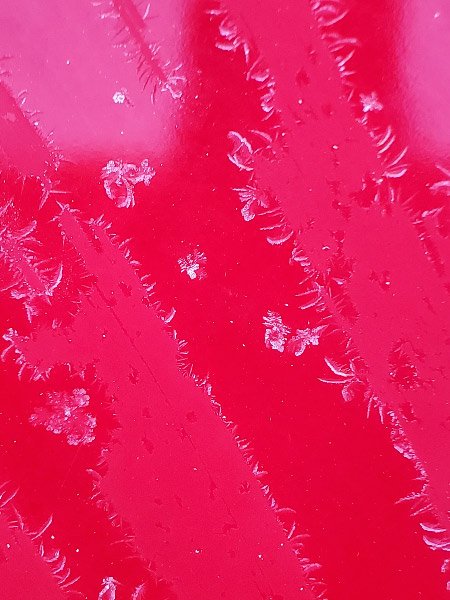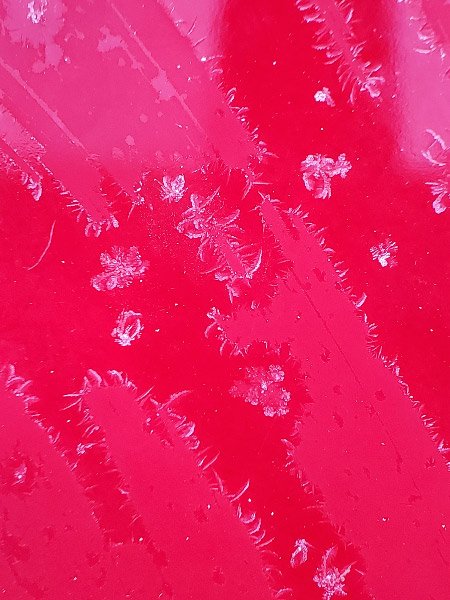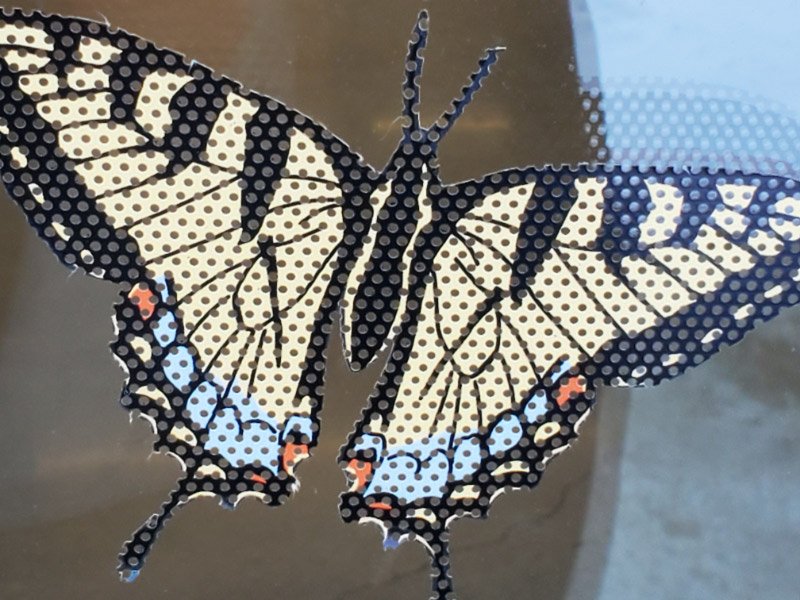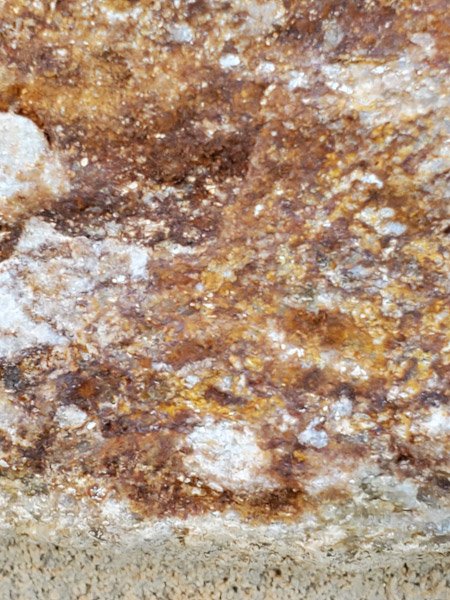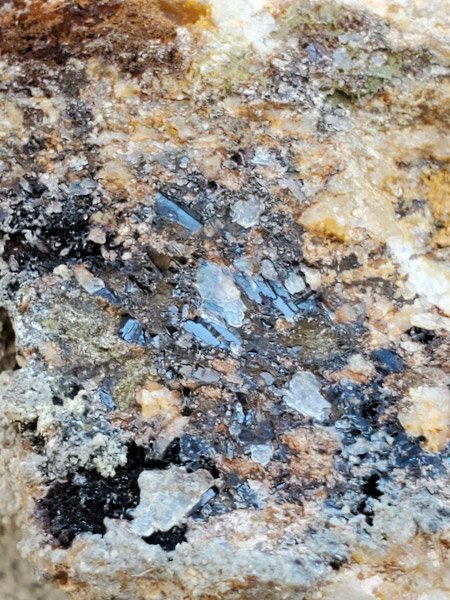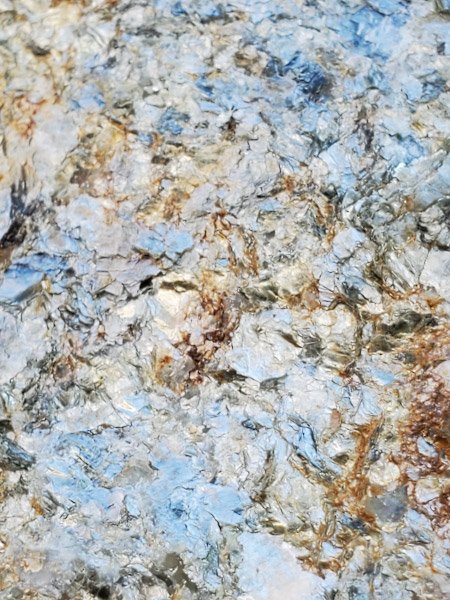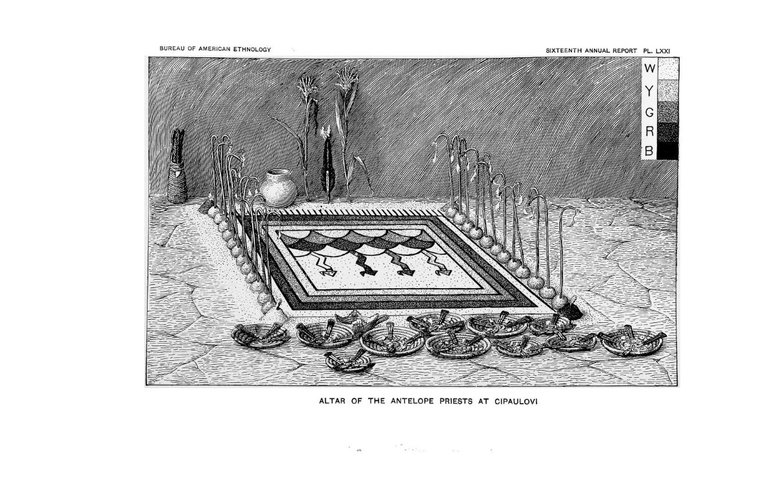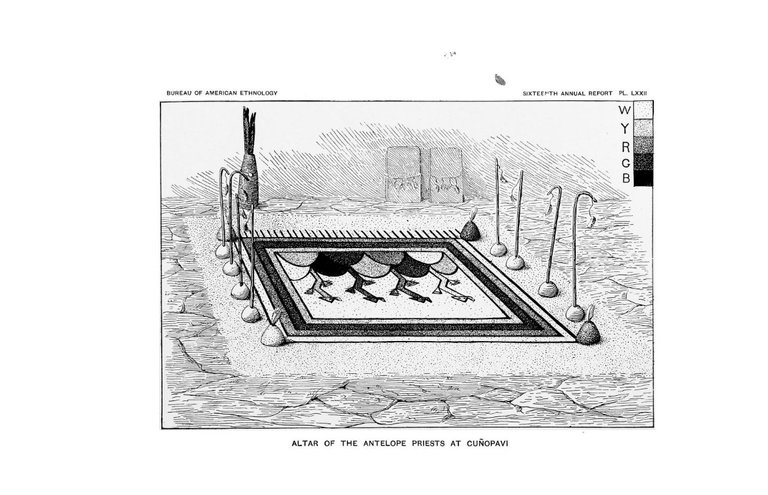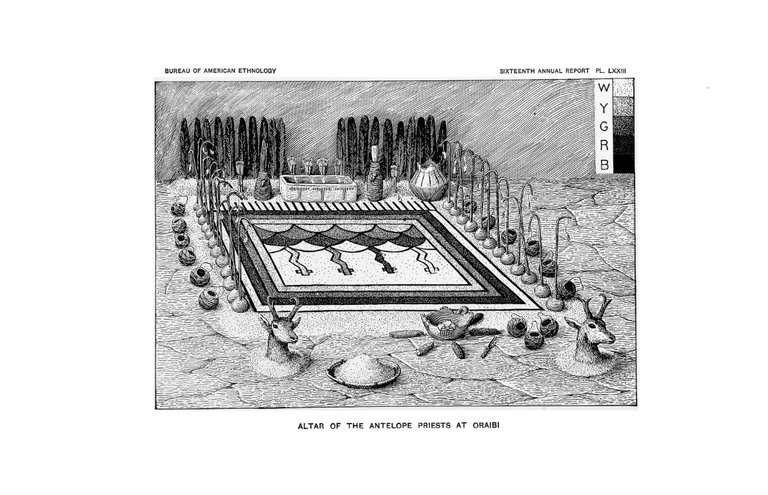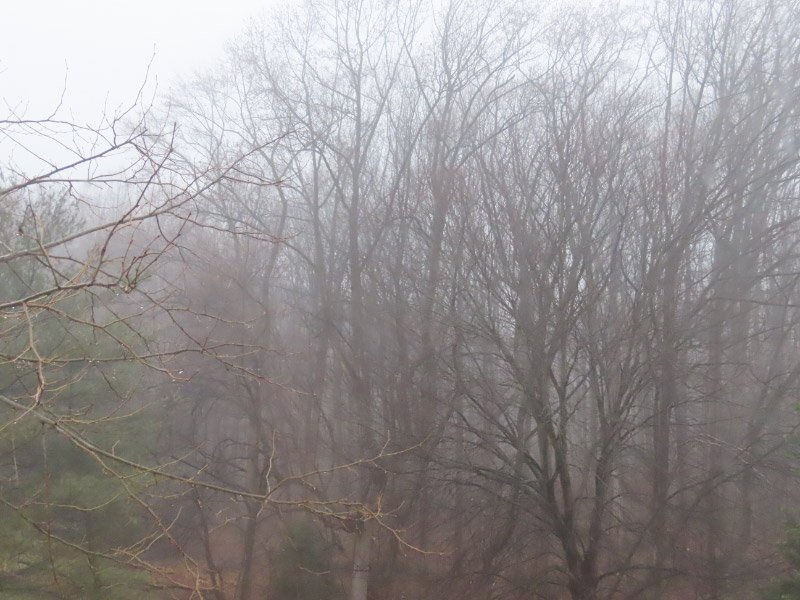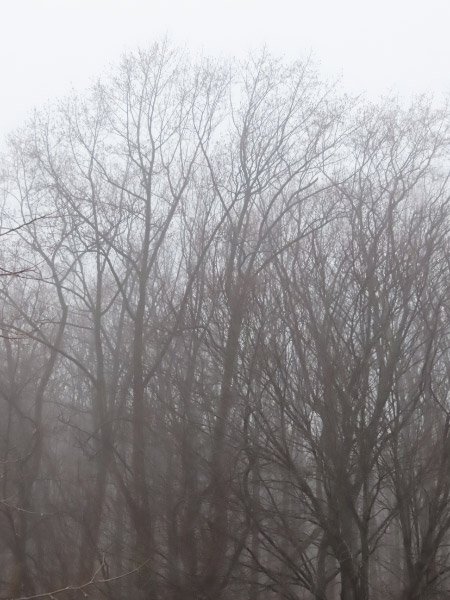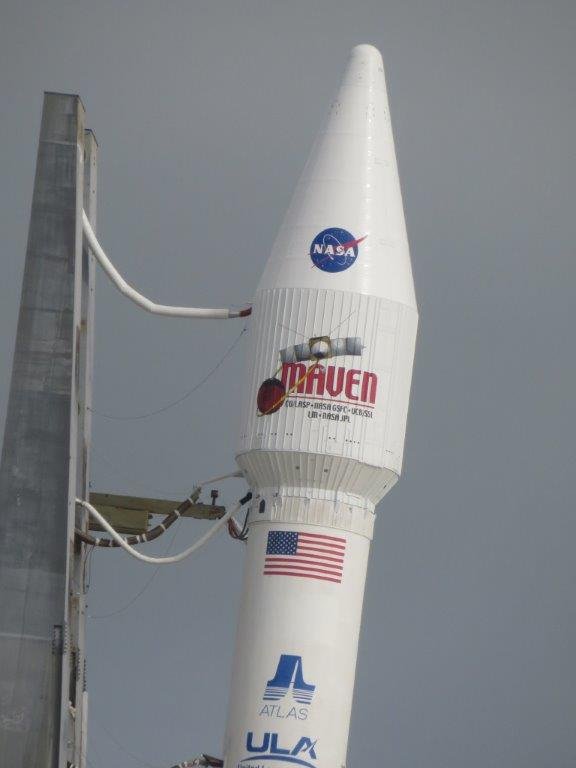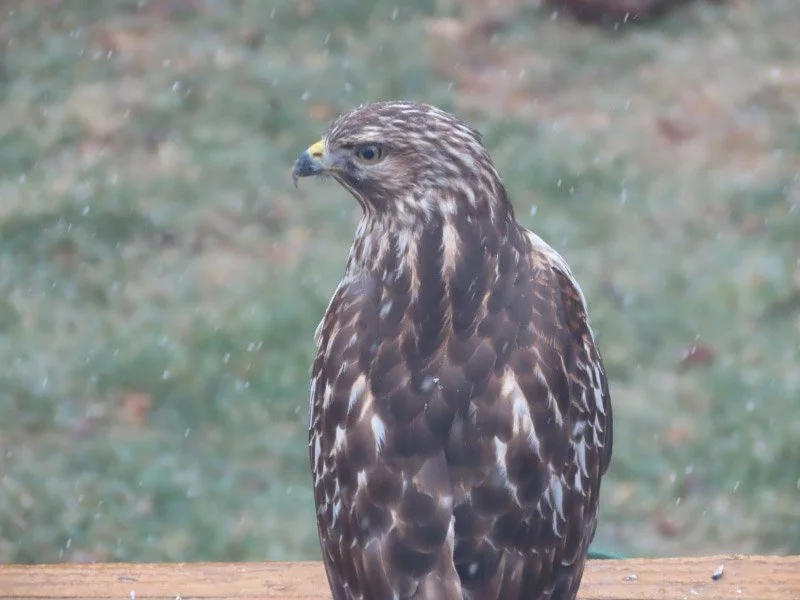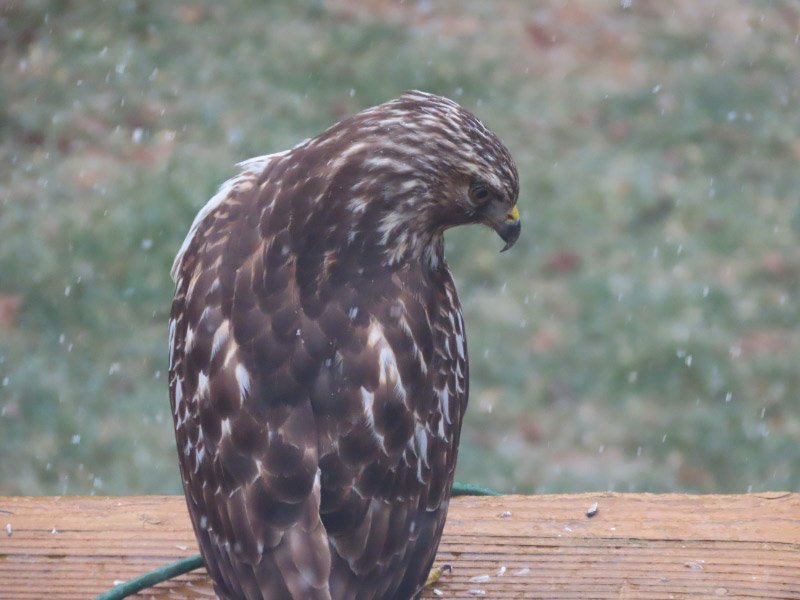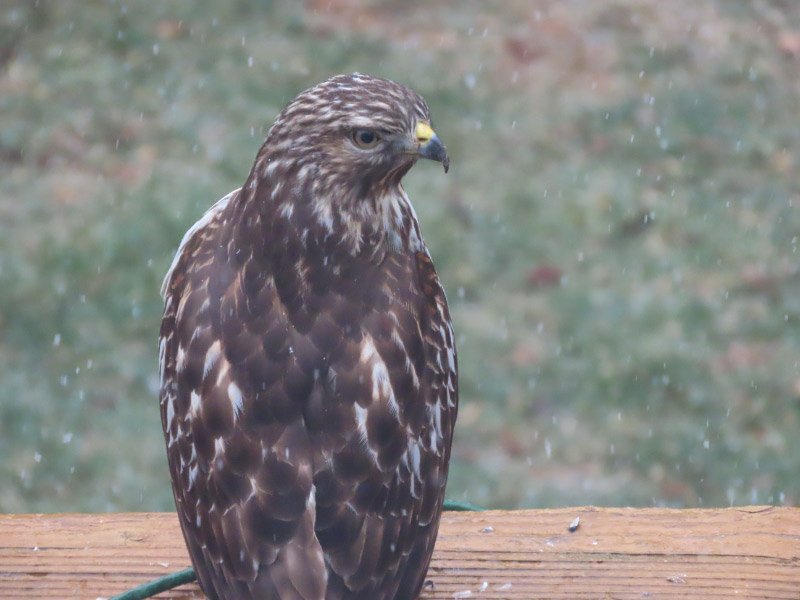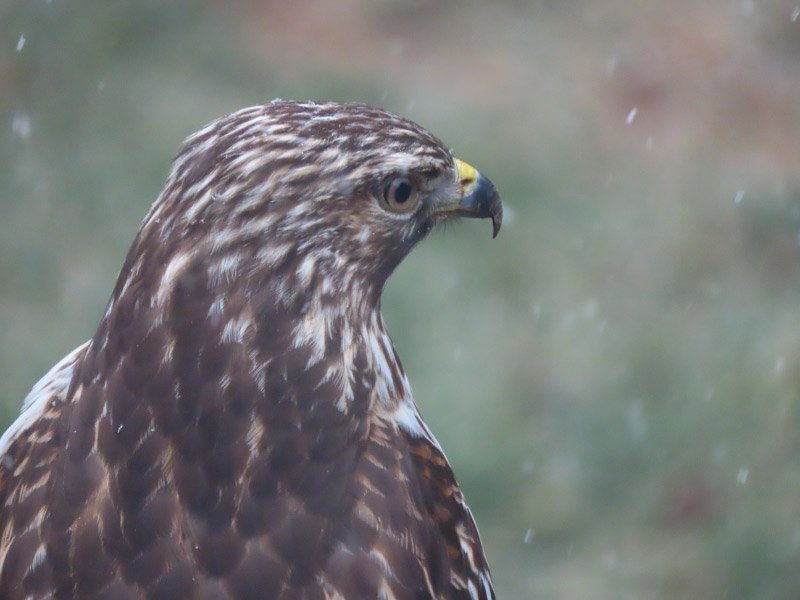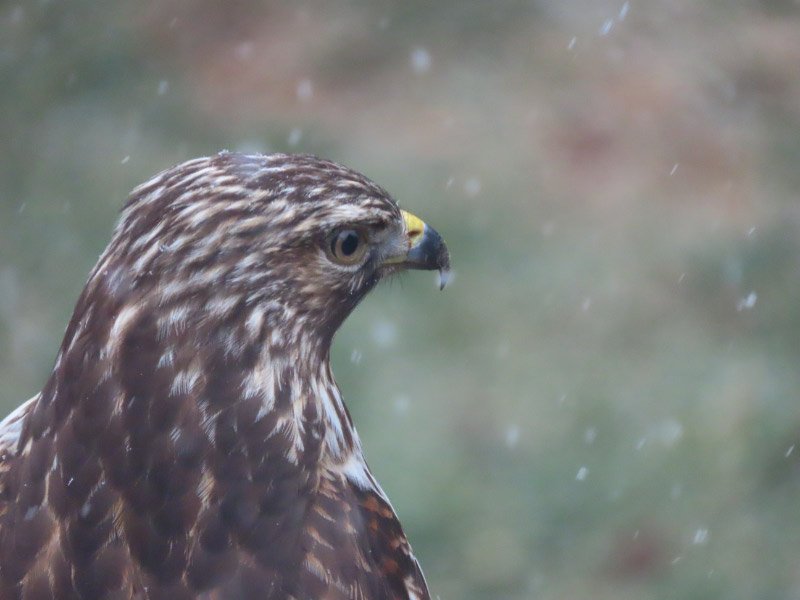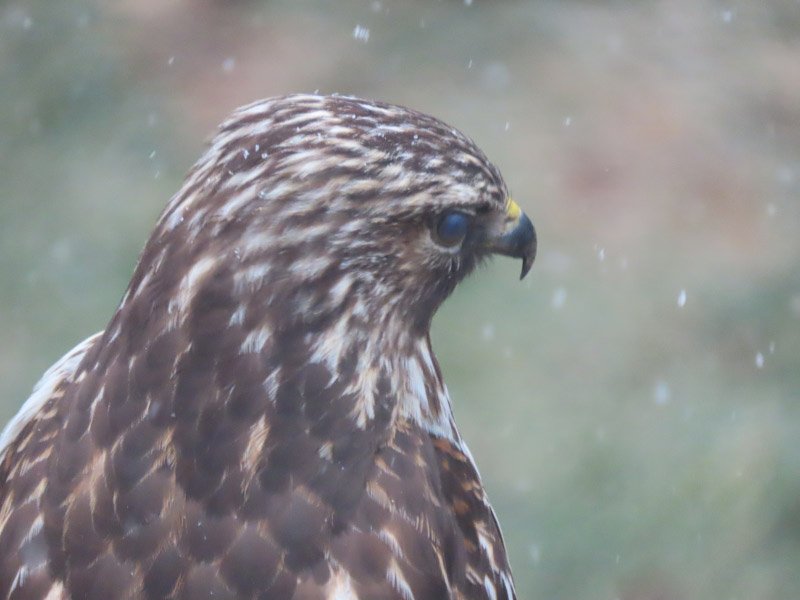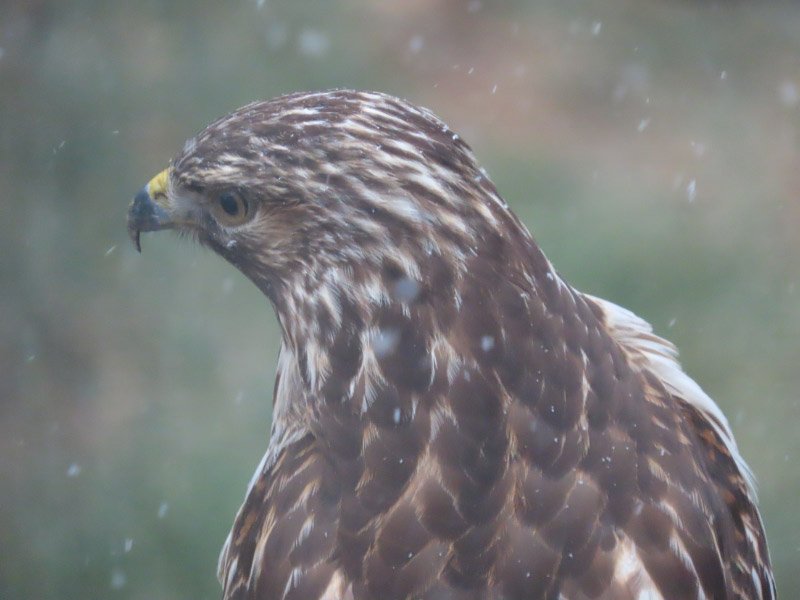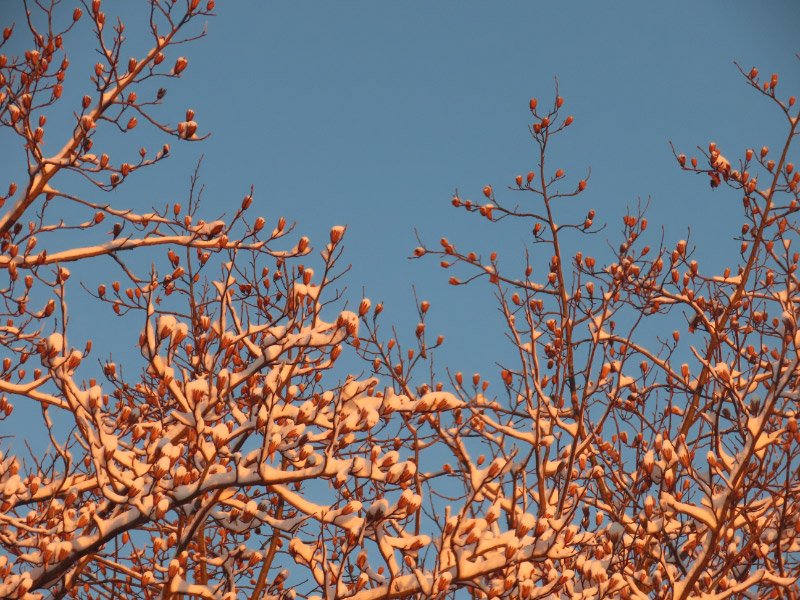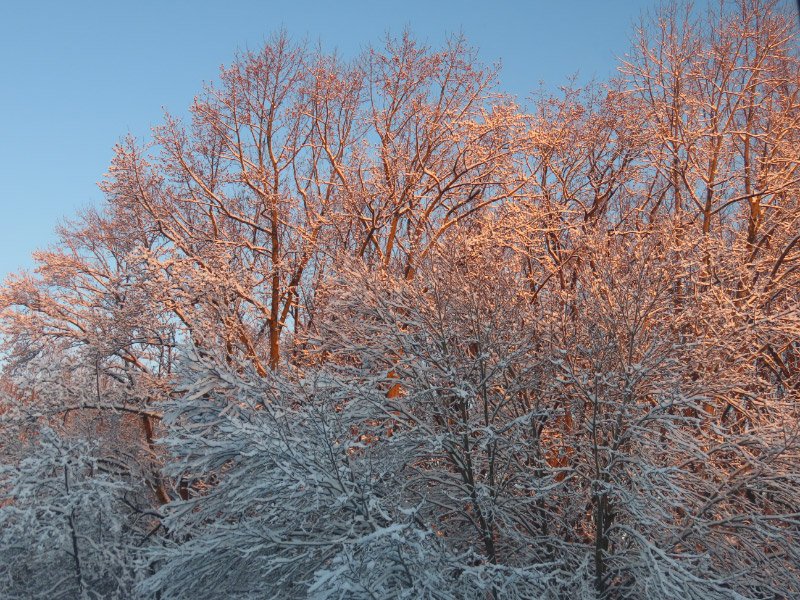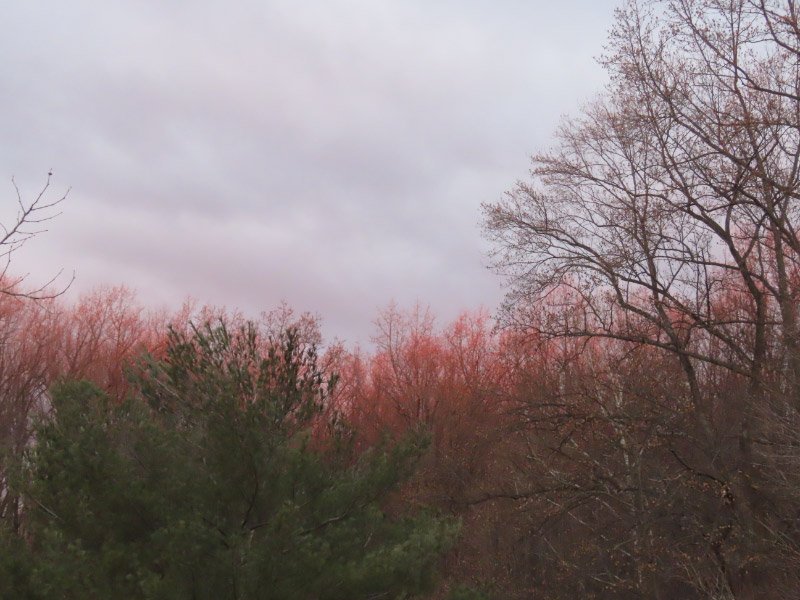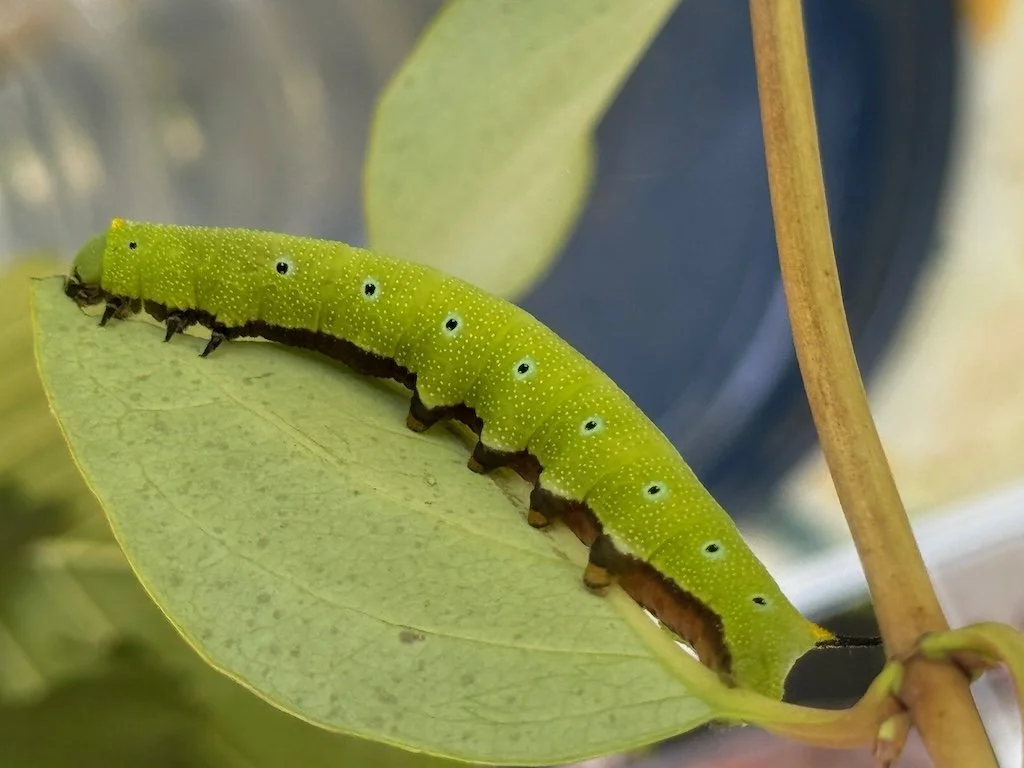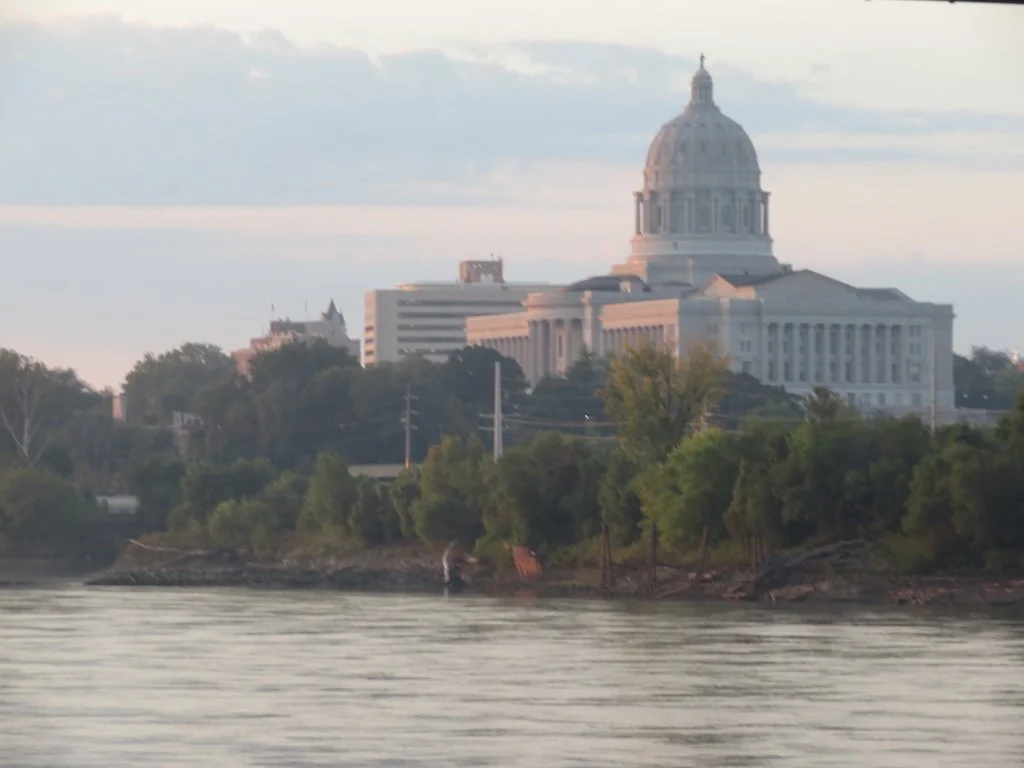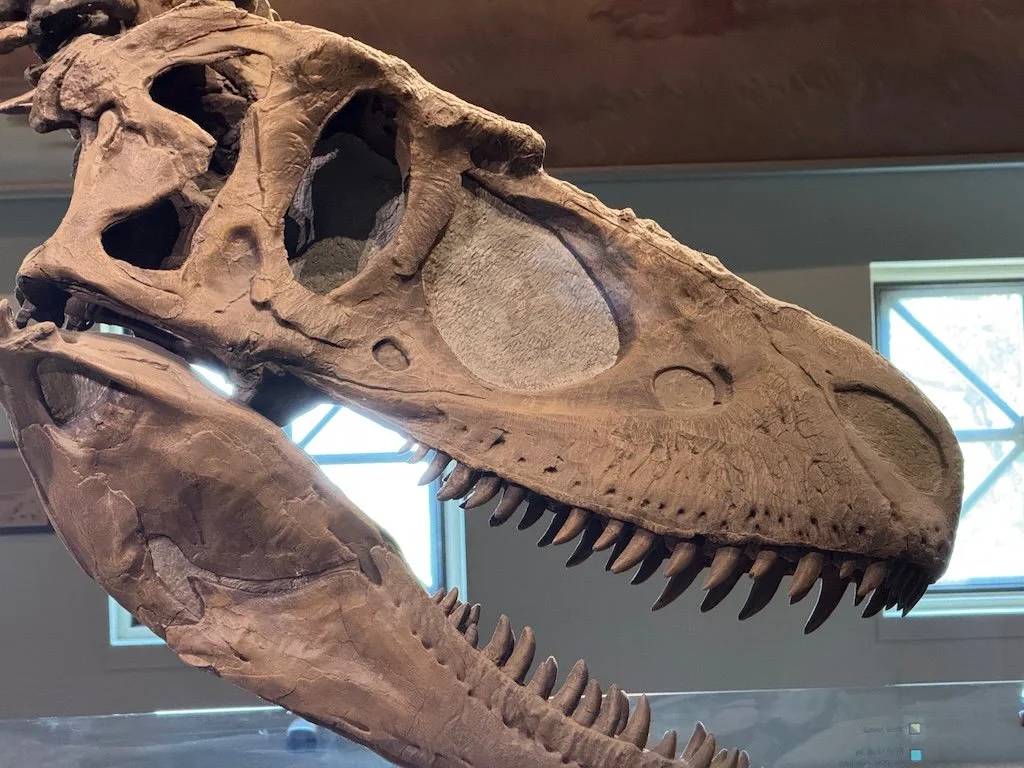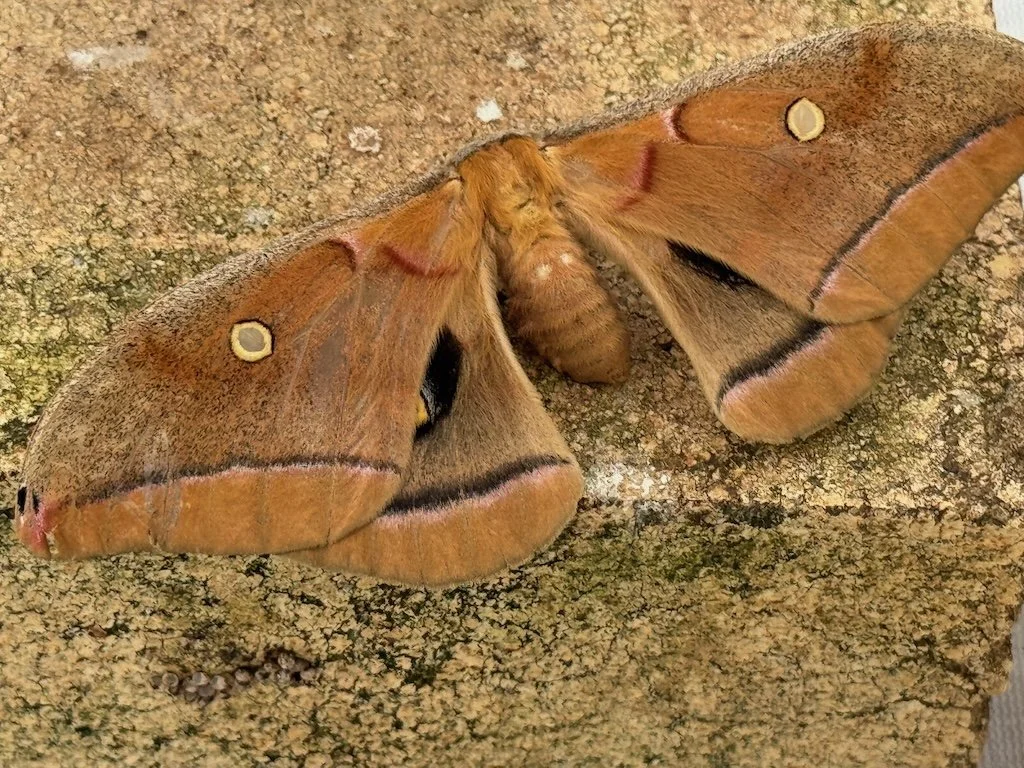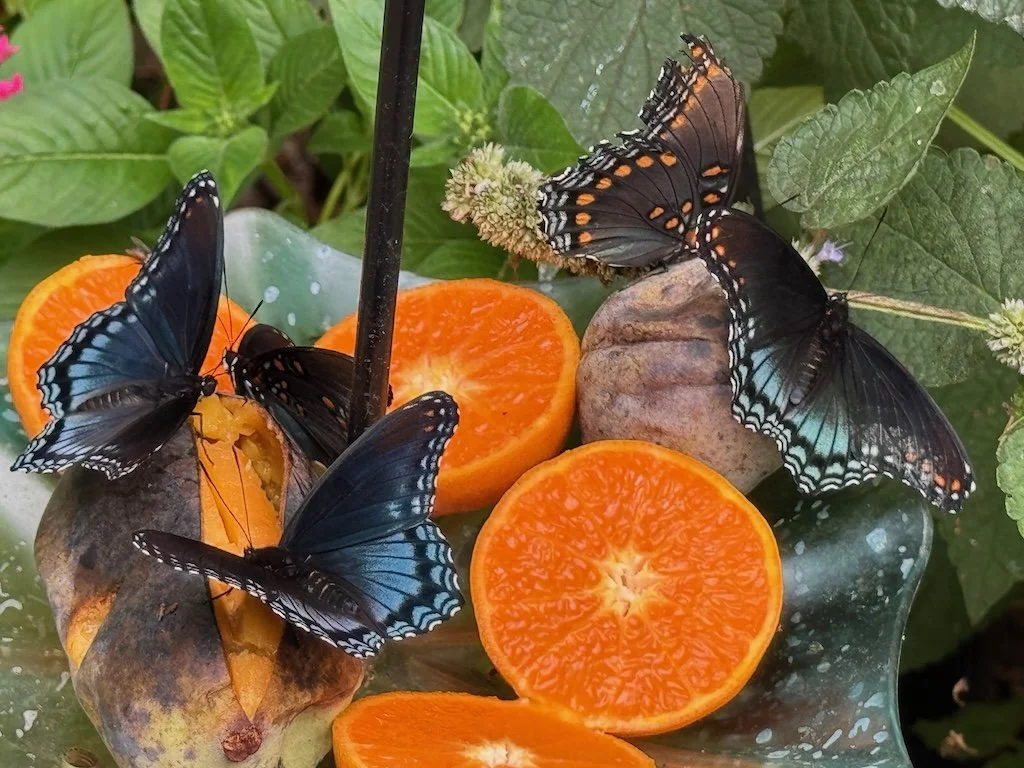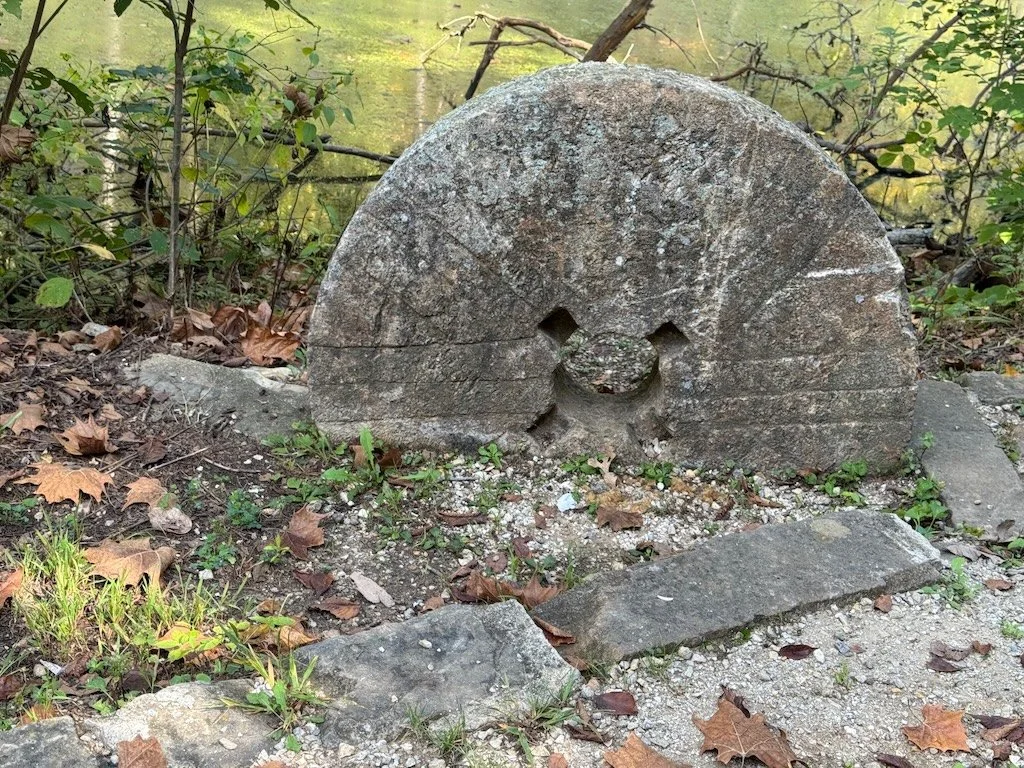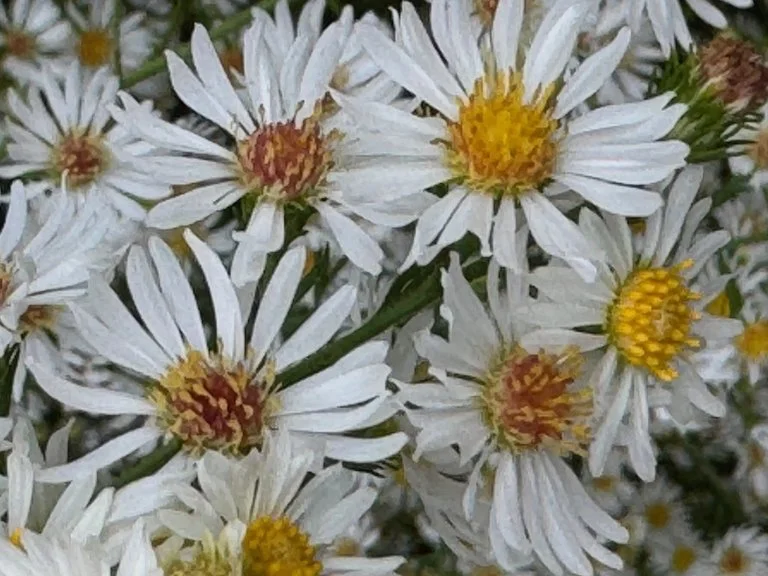Two Frosts
/I watched the forecast for some cold morning temperatures and put a red glass plate out on the deck the night before the temperature for the next morning was forecast for 23 degrees. The idea was to get some frost accumulation on the glass for some macro photography. It worked - even thought the crystals were relatively small. One of my first attempts was an almost round structure…at two different magnifications.
Then I surveyed the rest of the plate and noticed crystals like feathers, spikes that branched off in all directions, other round collections of crystals that looked like a splash or explosion.
I couldn’t resist taking some pictures of the crystals on the deck railing. They were small; the pictures below are with my macro lens and then with my phone digitally magnifying that 8x!
The next morning was even colder – 17 degrees. At first, I thought there was no frost at all on the plate but when I looks more closely there were some very small areas of crystals. I immediately thought the crystals looked like small organisms in water (rather than ice crystals).
Then I spotted one that looked like a butterfly on a flower with its wings folded. The mind jumps to ‘looks like’ type thinking!
A little less magnification and the sheets of ice with spikes (I imaged cactus) are interspersed with the smaller organism-looking structures.
The temperature and dew point probably make a big different in the type of frost crystals that form. Photographing them has become my favorite February project! So far – each day has been unique.

















